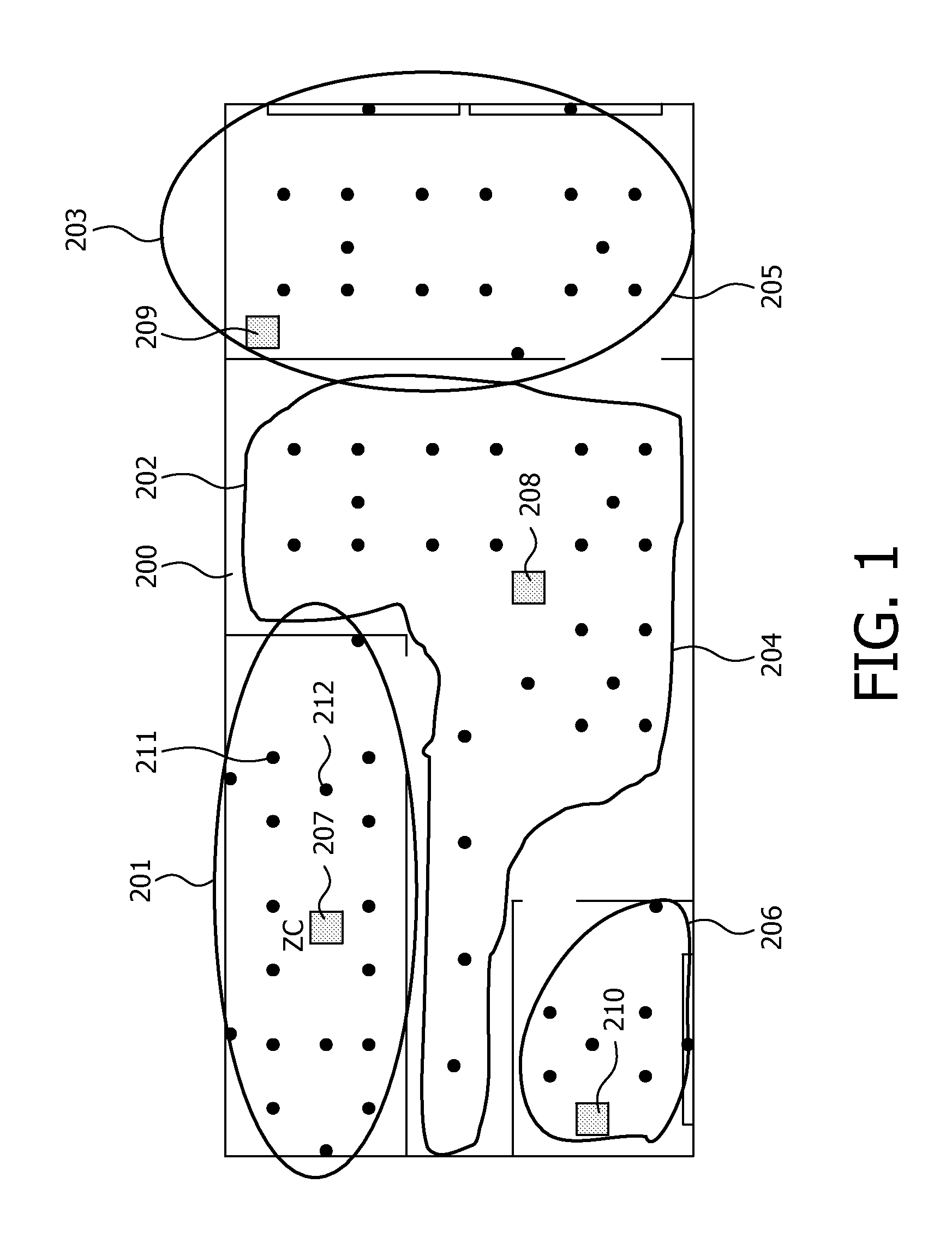Method of associating or re-associating devices in a control network
a control network and device technology, applied in data switching networks, program control, instruments, etc., can solve the problems of high installation cost, adds extra cost to the deployment of overall control and automation applications, and impedes the operation of communication networks for control and automation in buildings
- Summary
- Abstract
- Description
- Claims
- Application Information
AI Technical Summary
Benefits of technology
Problems solved by technology
Method used
Image
Examples
Embodiment Construction
[0044]FIG. 1 depicts graphically the concept of control zones 201-206 associated to an area 200, showing zone controllers (ZCs) 207-210 that are responsible for executing control algorithms, configuring and managing the other devices within a given control zone. As an example, zone controller (ZC) 207 manages all the devices 211-212 (solid dots) within the control zone 201. An example of such devices is sensors (e.g. photo-sensors, occupancy-sensors, temperature-sensors, and humidity sensors), actuators (e.g. heater, window blinds / shades, lighting), control and management equipment (e.g. control station, controllers) and performance measurement equipment such as energy meters. Such zone controllers (ZCs) are typically adapted to execute localized control over variables that can be controlled at the user level, e.g. integrated lighting, daylight, Heating Ventilation and Air Conditioning (HVAC) and blind control in a small office room.
[0045]The control zones 201-206 may be defined by ...
PUM
 Login to View More
Login to View More Abstract
Description
Claims
Application Information
 Login to View More
Login to View More - R&D
- Intellectual Property
- Life Sciences
- Materials
- Tech Scout
- Unparalleled Data Quality
- Higher Quality Content
- 60% Fewer Hallucinations
Browse by: Latest US Patents, China's latest patents, Technical Efficacy Thesaurus, Application Domain, Technology Topic, Popular Technical Reports.
© 2025 PatSnap. All rights reserved.Legal|Privacy policy|Modern Slavery Act Transparency Statement|Sitemap|About US| Contact US: help@patsnap.com



